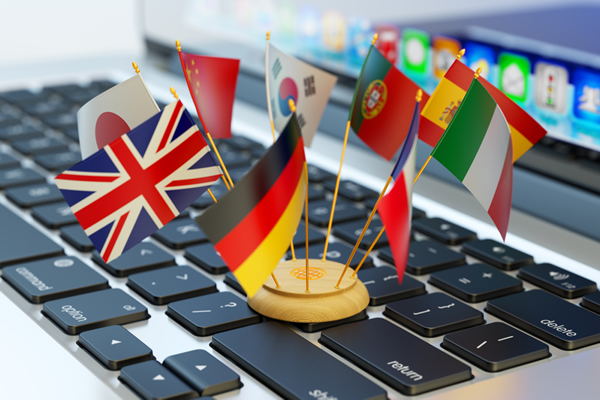ATD Blog
Are You Ready to Translate Your E-Learning?
Wed Jan 04 2017

My client planned to translate three e-learning lessons to Arabic and would provide me with the translated transcripts in a few months. Previously, I managed the translation of these same courses to French and Spanish. I thought the client understood the process.
I asked for the completed translated transcripts to create the quote.
I explained that we would add this translation to the existing translation memory for Arabic; thus, reducing the overall cost of translation.
I explained the difficulties of working with right-to-left text along with the Arabic alphabet.
A few months later, I received the transcript for the first lesson translated to Arabic. My client’s “transcript” refers to the MS Word document created when you publish to MS Word from Articulate Storyline. Anyone who uses Storyline knows that this produces un-editable screenshots of the slide, with editable Note texts below the screenshots. It also produces the layers if you select that option. I sent this document along with the original English Storyline file to the vendor I use. They prepared the quote, sent it to me, I added in my costs, and sent this quote to the client.
The first question was, “Why is there a translation cost? We already translated the course.” The answer: The transcript only covered a fraction of all the text that required translation in an e-learning course.
To avoid these misunderstandings here is a list of the steps you should take before starting translation and their importance in a well-managed translation process.
Get Trained in Translation Management
Managing a translation project without awareness of all its subtleties can result in much higher costs and a longer schedule than expected. Organization is key, but it requires knowing what translation involves. Ideally, you want to think about preparing your materials in the original language for translation from the very start of the project.
Assemble a Translation Team Including Translator and Reviewers
Everyone involved in the translation review process must understand his or her role from the outset. Do not assume you can hand a document to someone who knows the language and ask that person to translate it. Do not assume that the reviewer understands that his or her role is to ensure the translation is accurate and represents the original intent of the document—this is not the time for revisions. These types of assumptions can result in much higher costs and a longer schedule than expected.
Build a Glossary of Terms
Be sure to build a glossary, particularly industry or specialized terms, and their translations. Although this adds an additional upfront cost, it speeds up translation, lowers costs, ensures consistency, and reduces frustration when incorrect terminology is used.
Identify All the Materials
You may be surprised by the number of materials that need translation, such as:
audio
narration script for audio
graphics
documents
onscreen text
player interfaces (such as e-learning)
LMS or other web interfaces
app.
Not identifying all the media that needs translation can result in unexpected costs from missed translations and translations done incorrectly. For example, in some languages spoken text is handled differently from written text, if the translator is unaware of this, he or she may use the wrong form.
Ensure All Materials Requiring Translation Are Final
Revisions to the original materials added after translation costs more money. So, before moving forward, be sure that:
all edits are complete
all graphics are complete
all reviews are complete.
Determine the Languages and Locales
Translations can be very subjective. What you consider incorrect could very correct to another, if each party is viewing the translations from different perspectives. For example, specify the Spanish translation. Is it for a Columbian audience? Likewise, is the Arabic translation for a Lebanese audience?
Avoid Using Jargon, Idiomatic Expressions, and Phrasal Verbs
Jargon and idiomatic expressions do not translate well, and can result in very poor and inaccurate translations. Here are some key examples:
Jargon example: “core competency” for “skills”
Idioms: “birds-eye view” for “aerial view”
Phrasal: “takes place” for “occurs”.
Write Concisely In Simple Language
Translation is charged by the word count. Less words cost less money to translate. Simpler language also results in fewer errors in translation.
Design your Materials for Translation
If you have not evaluated the affect certain images or colors could have on the target population, you could seriously offend someone. If the materials are not easy to review, you can delay the translation process.
